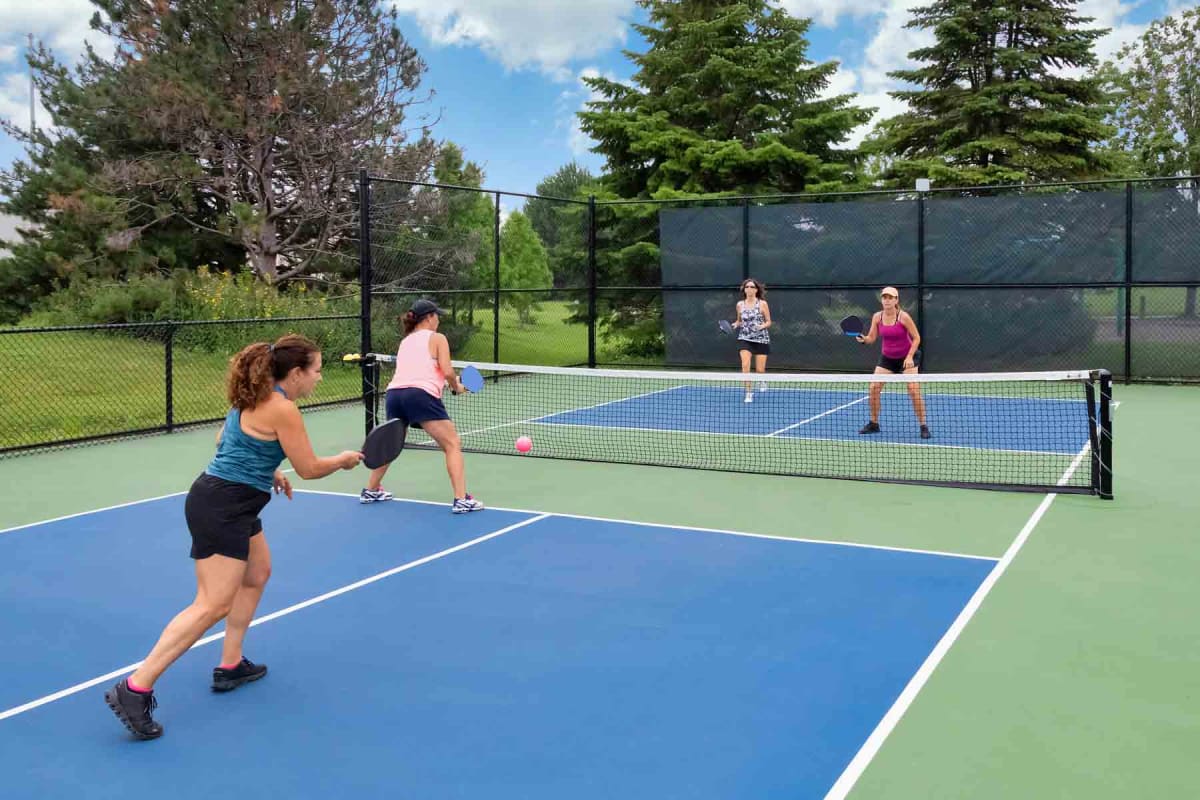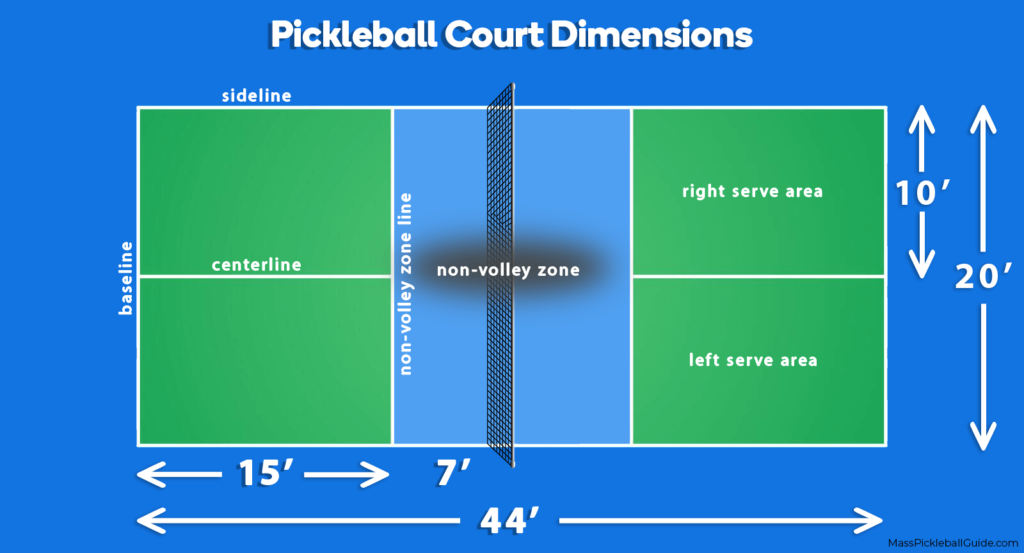Common Mistakes to Avoid in Your Pickleball Court Construction Process
Common Mistakes to Avoid in Your Pickleball Court Construction Process
Blog Article
Navigating Rules for Pickleball Court Building in Your Area
Creating a pickleball court in your area needs a nuanced understanding of different regional regulations, consisting of zoning regulations, building licenses, and safety and security criteria. Engaging with regional authorities and the area is critical for ensuring conformity and fostering assistance.
Understanding Neighborhood Zoning Regulations
When taking into consideration the building of a pickleball court, comprehending regional zoning regulations is essential to making certain compliance and avoiding possible lawful problems. Zoning guidelines dictate just how land can be made use of and commonly consist of requirements relevant to entertainment centers. These regulations can vary dramatically by town, affecting aspects such as court positioning, noise, size, and lighting degrees.
Prior to initiating building, it is vital to seek advice from the neighborhood zoning board or planning department to determine the details regulations that use to your building. Particular areas may limit leisure activities, while others may need certain authorizations or adherence to specific standards. It is also vital to think about troubles, which figure out just how far structures need to be from building lines or various other structures.
Additionally, personal developments, such as home owner organizations (HOAs), might impose their own rules concerning the building and construction and use pickleball courts. Comprehending these policies can protect against expensive adjustments or litigation down the line. Engaging with regional stakeholders and neighborhood members can offer beneficial understandings and foster support for your task, ensuring that it lines up with the neighborhood's assumptions and needs.
Acquiring Necessary Structure Permits
Just how does one navigate the complexities of getting required building permits for a pickleball court? The process starts with understanding regional laws and demands stated by community authorities. Typically, you will require to send a thorough site strategy that describes the recommended court dimensions, products, and format. This plan must adhere to zoning laws and any kind of details guidelines referring to entertainment centers.

When authorizations are acquired, it is vital to adhere to any type of inspection routines and demands throughout the building and construction stage. Maintaining communication with neighborhood authorities will facilitate a smoother approval procedure and aid stay clear of potential obstacles. By completely preparing and comprehending the permitting landscape, you can successfully navigate the complexities included in building a pickleball court while continuing to be compliant with all neighborhood laws.

Assessing Environmental Effect
When preparing the building and construction of a pickleball court,A detailed assessment of ecological influence is essential (Pickleball court construction). This evaluation aids determine prospective impacts on local environments, water sources, and area appearances. Trick variables to consider consist of website choice-- making sure that the court is not improved ecologically sensitive land, such as wetlands or environments for jeopardized species
Soil security and drain patterns need to be analyzed to prevent erosion and water merging, which can adversely affect bordering vegetation and wildlife. Furthermore, the choice of materials is critical; selecting sustainable and eco-friendly choices decreases ecological harm.
The implementation of effective stormwater monitoring techniques is an additional vital element, as it aids mitigate runoff and sedimentation. Engaging with local environmental firms can provide useful insights right into guidelines and finest techniques particular to visit this website your area.
Last but not least, community input can be beneficial in recognizing any type of neighborhood ecological worries and fostering support for the task. By conducting a complete environmental impact assessment, stakeholders can ensure that pickleball court building lines up with lasting practices and contributes positively to the neighborhood's eco-friendly health Full Report and wellness.
Adhering To Safety Criteria
Guaranteeing compliance with safety and security requirements is vital for the successful building and construction and operation of a pickleball court. Sticking to recognized safety regulations minimizes the threat of crashes and injuries, ensuring a secure atmosphere for gamers.
Key safety standards consist of proper court dimensions, surface area materials, and lighting requirements. The court needs to satisfy the main measurements of 20 feet wide by 44 feet long for increases play, with suitable buffer areas to avoid injuries from wayward spheres. Pickleball court construction. The surface area must be created from non-slip materials to improve traction and reduce the likelihood of falls
Additionally, lighting should be ample for night play, supplying uniform illumination to stay clear of darkness that can impede presence. Local building ordinance might also determine details demands for secure fencing and web height to make certain gamer safety and avoid unapproved accessibility to the court location.
Normal evaluations and upkeep are vital to support these criteria with time. By prioritizing safety compliance, court owners not only protect gamers but also promote a positive track record within the neighborhood. This dedication to safety can urge better engagement and enjoyment of the sporting activity, ultimately adding to its development and sustainability.

Engaging the Area in Planning
Neighborhood involvement in the drawing board of pickleball court construction can considerably improve the project's overall success. Involving neighborhood homeowners and stakeholders fosters a sense of ownership and encourages collective decision-making, which can bring about wider support for the campaign.
To successfully entail the neighborhood, coordinators ought to launch public conferences or workshops, giving a system for citizens to voice their opinions and choices pertaining to area, layout, and services. Surveys and feedback forms can also be used to gather understandings from a broader target market, ensuring that diverse point of views are thought about.
Moreover, creating a neighborhood advisory board can assist in ongoing discussions and address problems throughout the planning process. This board can this link include reps from numerous demographics, such as local schools, recreational companies, and neighborhood watch, thereby intensifying area depiction.
Effective communication is key; updates concerning the job need to be consistently shared via e-newsletters, social networks, or local publications. By focusing on neighborhood interaction, planners can grow enthusiasm, alleviate potential resistance, and produce a pickleball facility that really reverberates with neighborhood values and demands. This collaborative technique not just improves the job but also reinforces community ties.
Final Thought
To conclude, navigating the intricacies of pickleball court building and construction demands an extensive understanding of local guidelines, consisting of zoning regulations, structure licenses, and security criteria. Carrying out ecological assessments is necessary to reduce eco-friendly effect, while area engagement can improve support for such tasks. By sticking to these guidelines and fostering collaboration, successful application of pickleball courts can be accomplished, promoting leisure opportunities and community health. Proceeded persistance in these areas will certainly make certain lasting and certified growth.
Constructing a pickleball court in your location calls for a nuanced understanding of different local regulations, including zoning legislations, building licenses, and security standards.When considering the building and construction of a pickleball court, understanding local zoning regulations is critical to guaranteeing conformity and staying clear of potential legal problems. By extensively preparing and comprehending the permitting landscape, you can efficiently navigate the intricacies included in building a pickleball court while remaining certified with all neighborhood policies.
In conclusion, navigating the complexities of pickleball court building demands an extensive understanding of neighborhood laws, including zoning regulations, building permits, and security criteria. By sticking to these standards and promoting cooperation, successful implementation of pickleball courts can be achieved, advertising leisure opportunities and neighborhood wellness.
Report this page